 W
WAlligator meat is the meat from alligators that is for consumption. It has been used both historically and in contemporary times in various cuisines of the Southern United States. Alligator eggs are also for consumption. Alligator meat has been described as a healthy meat source for humans due to its high protein and low fat composition. It has been described as being mild flavored and firm in texture.
 W
WAnchovies are small, common saltwater forage fish in the family Engraulidae that are used as human food and fish bait. There are 144 species in 17 genera found in the Atlantic, Indian, and Pacific Oceans. Anchovies are usually classified as an oily fish. They are small, green fish with blue reflections due to a silver longitudinal stripe that runs from the base of the caudal fin. They range from 2 centimetres (0.79 in) to 40 centimetres (16 in) in adult length, and the body shape is variable, with more slender fish in northern populations.
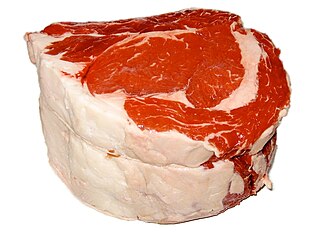 W
WBeef is the culinary name for meat from cattle, particularly skeletal muscle. Humans have been eating beef since prehistoric times. Beef is a source of protein and nutrients.
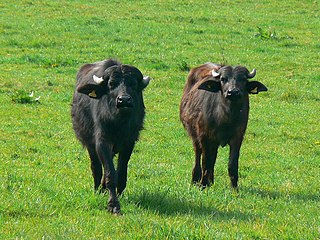 W
WBuffalo meat is the meat of the water buffalo, a large bovid, raised for its milk and meat in many countries including India, Nepal, Pakistan, Bangladesh, Philippines, Bulgaria, Italy, Russia, Czech Republic, Slovakia, Australia and Egypt.
 W
WChicken is the most common type of poultry in the world. Owing to the relative ease and low cost of raising them in comparison to animals such as cattle or hogs, chickens have become prevalent in numerous cuisines.
 W
WCrab meat or crabmeat is the meat found within a crab. It is used in many cuisines across the world, prized for its soft, delicate and sweet taste. Crab meat is low in fat and contains around 340 kJ (82 kcal) per 85-gram (3 oz) serving. Brown crab, blue crabs, blue swimming crabs, and red swimming crabs are among the most commercially available species of crabmeat globally.
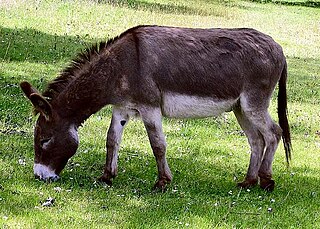 W
WThe donkey or ass is a domesticated member of the horse family, Equidae. The wild ancestor of the donkey is the African wild ass, E. africanus. The donkey has been used as a working animal for at least 5000 years. There are more than 40 million donkeys in the world, mostly in underdeveloped countries, where they are used principally as draught or pack animals. Working donkeys are often associated with those living at or below subsistence levels. Small numbers of donkeys are kept for breeding or as pets in developed countries.
 W
WIn cooking and gastronomy, duck or duckling is the meat of several species of bird in the family Anatidae, found in both fresh and salt water. Duck is eaten in many cuisines around the world. It is a high-fat, high-protein meat rich in iron. Duckling nominally comes from a juvenile animal, but may be simply a menu name.
 W
WThe edible dormouse or fat dormouse is a large dormouse and the only living species in the genus Glis, found in most of western Europe. Its name comes from the Romans, who ate them as a delicacy.
 W
WEels are elongated fish, ranging in length from 5 centimetres (2.0 in) to 4 metres (13 ft). Adults range in weight from 30 grams to over 25 kilograms. They possess no pelvic fins, and many species also lack pectoral fins. The dorsal and anal fins are fused with the caudal or tail fin, forming a single ribbon running along much of the length of the animal. Most eels live in the shallow waters of the ocean and burrow into sand, mud, or amongst rocks. A majority of eel species are nocturnal and thus are rarely seen. Sometimes, they are seen living together in holes, or "eel pits". Some species of eels live in deeper water on the continental shelves and over the slopes deep as 4,000 metres (13,000 ft). Only members of the family Anguillidae regularly inhabit fresh water, but they too return to the sea to breed.
 W
WElephant meat is the flesh and other edible parts of elephants.
 W
WMany species of fish are consumed as food in virtually all regions around the world. Fish has been an important source of protein and other nutrients for humans throughout history.
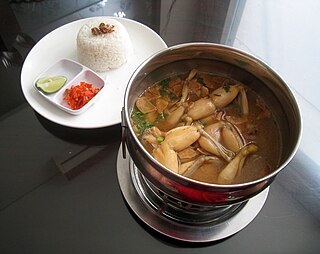 W
WFrog legs are one of the better-known delicacies of French and Chinese cuisine. The legs of edible frogs are also consumed in other parts of the world, including Vietnam, Cambodia, Thailand, Indonesia, Northern Italy, the Alentejo region of Portugal, Spain, Albania, Slovenia, Romania, Bulgaria, Northwestern Greece South Africa and the Southern regions of the United States. As of 2014, the world's largest exporter of edible frogs is Indonesia. In Brazil, Mexico and the Caribbean, many frogs are still caught wild.
 W
WGame or quarry is any animal hunted for food, and the meat of those animals. The type and range of animals hunted for food varies in different parts of the world.
 W
WGoat meat or goat's meat is the meat of the domestic goat (Capra aegagrus hircus). The common name for goat meat is simply "goat", though meat from adult goats is referred to as chevon, while that from young goats can be called capretto (It.), cabrito (Sp.) or kid. In South Asian and Caribbean cuisine, mutton commonly means goat meat. In South Asia, where mutton curry is popular, "mutton" is used for both goat and lamb meat. The United States Department of Agriculture promoted the term "chevon", a portmanteau of chèvre ('goat') and mouton in the 1920s. According to market research, consumers in the United States prefer the pseudo-French-language-derived culinary name "chevon". "Cabrito", a word of Spanish and Portuguese origin, refers specifically to the meat of a young, milk-fed goat. It is also known as chivo.
 W
WThe guinea pig or domestic guinea pig, also known as the cavy or domestic cavy, is a species of rodent belonging to the genus Cavia in the family Caviidae. Breeders tend to use the word cavy to describe the animal, while in scientific and laboratory contexts, it is far more commonly referred to by the colloquial name guinea pig. Despite their common name, guinea pigs are not native to Guinea, nor are they closely related biologically to pigs, and the origin of the name is still unclear. They originated in the Andes of South America. Studies based on biochemistry and hybridization suggest they are domesticated animals that do not exist naturally in the wild, descendants of a closely related cavy species such as C. tschudii. They were originally domesticated as livestock for a source of meat, and are still consumed in some parts of the world.
 W
WHares and jackrabbits are leporids belonging to the genus Lepus. Hares are classified in the same family as rabbits. They are similar in size to rabbits and have similar herbivorous diets, but generally have longer ears and live solitarily or in pairs. They do not dig burrows but nest in slight depressions called 'forms', often in long grass. Also unlike rabbits, their young are able to fend for themselves shortly after birth rather than emerging blind and helpless. Most are fast runners. Hare species are native to Africa, Eurasia and North America.
 W
WHerring are forage fish in the wild, mostly belonging to the family Clupeidae, but they are also an important food for humans. Herring often move in large schools around fishing banks and near the coast. The most abundant and commercially important species belong to the genus Clupea, found particularly in shallow, temperate waters of the North Pacific and North Atlantic Oceans, including the Baltic Sea, as well as off the west coast of South America. Three species of Clupea are recognized; the main taxon, the Atlantic herring, accounts for over half the world's commercial capture of herrings.
 W
WHorse meat forms a significant part of the culinary traditions of many countries, particularly in Europe and Asia. The eight countries which consume the most horse meat consume about 4.3 million horses a year. For the majority of humanity's early existence, wild horses were hunted as a source of protein.
 W
WIguana meat has historically been important in the culinary traditions of Mexico and Central America; particularly in the states of Jalisco, Michoacán and Colima. In Fray Sahagún's history of colonial Mexico, he mentions the iguana as a traditional food throughout Western Mexico and describes it as good to eat when properly prepared. Iguana meat is legal in the United States of America and several other countries, however importation is restricted due to CITES conventions.
 W
WKangaroo meat is produced in Australia from wild kangaroos and is exported to over 60 overseas markets.
 W
WLamb, hogget, and mutton, generically sheep meat, are the meat of domestic sheep, Ovis aries. A sheep in its first year is a lamb and its meat is also lamb. A sheep in its second year and its meat are hogget. Older sheep meat is mutton. Generally, "hogget" and "sheep meat" are not used by consumers outside New Zealand, South Africa and Australia with the exception of the Navajo people in the American Southwest, who consume mutton as a staple part of their diet. Historically, Navajo sheep ranching has been regulated by the Federal Government due to habitat destruction caused by sheep overgrazing.
 W
WMonkey meat is the flesh and other edible parts derived from monkeys, a kind of bushmeat. Human consumption of monkey meat has been historically recorded in numerous parts of the world, including multiple Asian and African nations. Monkey meat consumption has been reported in parts of Europe and the Americas as well.
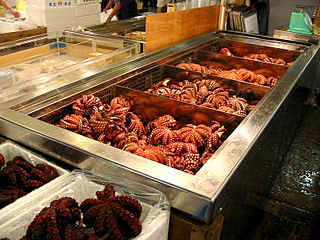 W
WHumans of some cultures eat octopus. The arms and sometimes other body parts are prepared in various ways, often varying by species and/or geography.
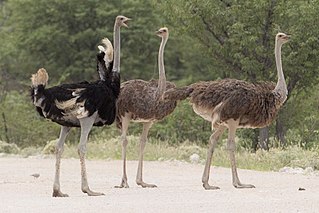 W
WThe common ostrich or simply ostrich, is a species of large flightless bird native to certain large areas of Africa. It is one of two extant species of ostriches, the only living members of the genus Struthio in the ratite order of birds. The other is the Somali ostrich, which was recognized as a distinct species by BirdLife International in 2014 having been previously considered a very distinctive subspecies of ostrich.
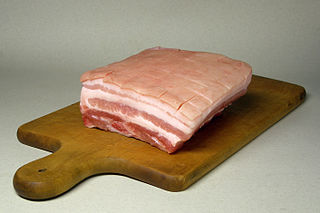 W
WPork is the culinary name for the meat of a domestic pig. It is the most commonly consumed meat worldwide, with evidence of pig husbandry dating back to 5000 BC.
 W
WBoth Old World and New World quail include edible species. The common quail used to be much favoured in French cooking, but quail for the table are now more likely to be domesticated Japanese quail. The common quail is also part of Polish cuisine, Maltese cuisine, Portuguese cuisine, Italian cuisine, Mexican cuisine, and Indian cuisine. Quails are commonly eaten complete with the bones, since these are easily chewed and the small size of the bird makes it inconvenient to remove them.
 W
WSalmon is a common food fish classified as an oily fish with a rich content of protein and omega-3 fatty acids. In Norway – a major producer of farmed and wild salmon – farmed and wild salmon differ only slightly in terms of food quality and safety, with farmed salmon having lower content of environmental contaminants, and wild salmon having higher content of omega-3 fatty acids.
 W
WSeal meat is the flesh, including the blubber and organs, of seals used as food for humans or other animals. It is prepared in numerous ways, often being hung and dried before consumption. Historically, it has been eaten in many parts of the world, both as a part of a normal diet, and as sustenance.
 W
WShark meat is a seafood consisting of the flesh of sharks. Its consumption by humans has been mentioned since the fourth century AD in literature. Several sharks are fished for human consumption, such as porbeagles, shortfin mako shark, requiem shark, and thresher shark, among others. Shark meat is popular in Asia, where it is often consumed dried, smoked, or salted. Shark meat is consumed regularly in Scandinavia, Japan, Australia, parts of India, parts of Canada, Sri Lanka, areas of Africa and Mexico. In western cultures, shark meat is sometimes considered as a taboo, although its popularity has increased in Western countries.
 W
WShrimp and prawn are types of seafood that are consumed worldwide. Although shrimp and prawns belong to different suborders of Decapoda, they are very similar in appearance and the terms are often used interchangeably in commercial farming and wild fisheries. A distinction is drawn in recent aquaculture literature, which increasingly uses the term "prawn" only for the freshwater forms of palaemonids and "shrimp" for the marine penaeids.
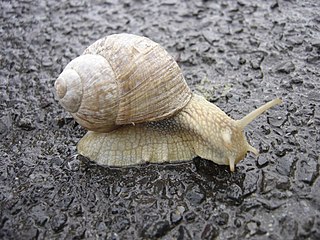 W
WA snail is, in loose terms, a shelled gastropod. The name is most often applied to land snails, terrestrial pulmonate gastropod molluscs. However, the common name snail is also used for most of the members of the molluscan class Gastropoda that have a coiled shell that is large enough for the animal to retract completely into. When the word "snail" is used in this most general sense, it includes not just land snails but also numerous species of sea snails and freshwater snails. Gastropods that naturally lack a shell, or have only an internal shell, are mostly called slugs, and land snails that have only a very small shell are often called semi-slugs.
 W
WIn culinary terminology, squab is a young domestic pigeon, typically under four weeks old, or its meat. The meat is widely described as tasting like dark chicken. The term is probably of Scandinavian origin; the Swedish word skvabb means "loose, fat flesh". It formerly applied to all dove and pigeon species, such as the wood pigeon, the mourning dove, the extinct-in-the-wild socorro dove, and the now extinct passenger pigeon, and their meat. More recently, squab meat comes almost entirely from domesticated pigeons. The meat of dove and pigeon gamebirds hunted primarily for sport is rarely called squab.
 W
WSquid is eaten in many cuisines; in English, the culinary name calamari is often used for squid dishes. There are many ways to prepare and cook squid. Fried squid is common in the Mediterranean. In Lebanon and Syria, however, it is served with tartar sauce. In New Zealand, Australia, the United States, and South Africa, it is sold in fish and chip shops. In Britain, it can be found in Mediterranean 'calamari' or Asian 'salt and pepper fried squid' forms in various establishments, often served as a bar snack, street food, or starter.
 W
WA tuna is a saltwater fish that belongs to the tribe Thunnini, a subgrouping of the Scombridae (mackerel) family. The Thunnini comprise 15 species across five genera, the sizes of which vary greatly, ranging from the bullet tuna up to the Atlantic bluefin tuna. The Atlantic bluefin averages 2 m (6.6 ft), and is believed to live up to 50 years.
 W
WWhale meat, broadly speaking, may include all cetaceans and all parts of the animal: muscle (meat), organs (offal), skin (muktuk), and fat (blubber). There is relatively little demand for it, compared to farmed livestock, and commercial whaling, which has faced opposition for decades, continues today in very few countries, although whale meat used to be eaten across Western Europe and colonial America. However, wherever dolphin drive hunting and aboriginal whaling exist, marine mammals are eaten locally as part of the subsistence economy: in the Faroe Islands, in the circumpolar Arctic, other indigenous peoples of the United States, in St. Vincent and the Grenadines, in a couple of villages in Indonesia and in certain South Pacific islands.